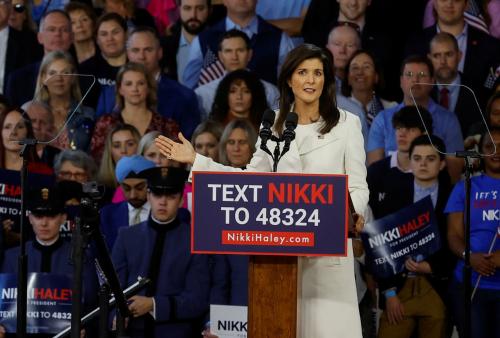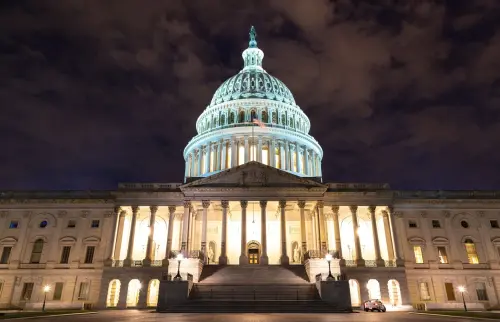In the coming weeks and months Congress will be dealing with the need to raise the debt ceiling. Like some Congresses before them, the new Republican Congress is holding the government hostage unless the President agrees to steep cuts in federal spending. But there are no easy answers to cutting the federal debt and some of the more popular ones don’t actually work. Here are three of the most popular:
Can’t we just solve the problem by cutting fraud, waste, and abuse in government programs?
Why not slash the number of federal employees?
Or, maybe, dig around in the special tax breaks that Congress has created over the years?
These are certainly all tempting targets. But, alas, they either wouldn’t produce much money — or they would be impossible to accomplish.
Take the first idea. How about going after waste, fraud, and abuse, the unholy trinity of government administration? The consulting firm McKinsey, for example, estimates that more than $140 billion a year in federal spending goes to improper payments — and that the government detects less than half of the amount. Better analytics, McKinsey says, could recapture a lot of this money.
But that means two things. One is better information technology, and the government already struggles with that. The IRS, for example, has already spent hundreds of millions of dollars to replace its outdated systems. But the government’s analyst-in-chief, the Government Accountability Office, found that the system wouldn’t be completely replaced until 2030 — at the earliest. By then, the system would be 60 years old.
GAO, in fact, has identified 38 more areas especially prone to fraud, waste, abuse, and mismanagement. All are fixable. But digging out the money at risk would require, in the short term, more money and more smart federal managers that debt-cutters seem in no mood to fund. So, there’s no free debt-cutting cash here.
The second popular idea stems from the argument that the federal government has too many employees, and that taxpayers would benefit by cutting back. For example, Sen. Rick Scott (R-Fla.) has a “Rescue America” plan to reduce the number of federal employees by 25% and to impose a 12-year term limit on all federal employees. He said, “The permanent ruling class in Washington is bankrupting us with inflation and debt, so they must be removed.”
But the math on this plan is instructive. The federal government’s payroll is about $752 billion, a princely sum for sure. However, it is only 12% of the government’s total spending in 2023 — since most government spending is on the entitlement programs such as Social Security and Medicare. And it takes federal employees to keep those programs running.
Now consider a collection of programs that people like — or can’t do without: Transportation Security Administration’s airport screening, the Federal Aviation Administration’s air traffic control system, Customs and Border Protection, Immigration and Customs, and the Coast Guard. Add the civilian workers at the Department of Defense who keep the nation’s armed forces in the field.
Then there’s one more function — the IRS, an agency that people love to hate but which they can’t do without. Not only does it collect the money to keep everything else running. The federal government is leaving $1 trillion on the table every year because it doesn’t have enough employees to collect the taxes due. The Democrats passed an $80 billion plan to beef up the IRS, but one of the first things that the Republicans said they wanted to cut was the additional IRS funding. That’s a torpedo in the easiest way to cut the deficit — and the debt.
If we add up the payroll for programs that people like and can’t do without, and then add the IRS payroll, that’s 70% of all federal employees. So, to meet Sen. Scott’s target, policymakers would have to cut almost everyone else keeping the lights on, from the Forest Service and its firefighters to the Department of Agriculture and its work to provide subsidies to farmers — along with the federal employees from the EPA who rushed to East Palestine, Ohio, to help with the cleanup of the Norfolk Southern freight train.
Even if policymakers make the cuts, they wouldn’t pick up that much cash — and they’d cripple programs on which the public depends, whether they live in blue states or red, like East Palestine, where Donald Trump beat Joe Biden by 45% in 2020.
Let’s dig into one more area: the vast number of special provisions hidden in the tax code. There’s a serious pile of cash here — more than $1.3 trillion in revenue lost every year, the Center for Budget and Policy Priorities estimates. If policymakers wiped these special provisions out — all of them — they’d make a real dent in the debt.
But these are tax breaks that policymakers aren’t about to slash. The biggest ones are: the exclusion from profits of employer contributions for medical insurance premiums; a special deal for rental income; tax breaks for employer defined contribution pension plans; and special deals for capital gains. The home mortgage deduction alone is a $150 billion annual program, and the deduction of home property taxes costs another $80 billion. Neither of these items appears in the budget buried deep in the fine print. But as economists have long recognized, they could make a big dent in the debt.
Most of these tax preferences are the closest thing to eternal life in Washington: Congress passes them, and it very rarely revisits them (although it did give the deductibility of property taxes a haircut during the Trump administration). These programs don’t directly increase the debt because they don’t appear in the budget. But by giving tax dollars away through deductions and credits, it indirectly increases the debt just as if it did.
It’s mighty tempting to stake out flashy ideas to slash the debt. But they don’t tend to work — and they distract attention from the big decisions that would actually make a difference.
The Brookings Institution is committed to quality, independence, and impact.
We are supported by a diverse array of funders. In line with our values and policies, each Brookings publication represents the sole views of its author(s).









Commentary
Why is federal spending so hard to cut? — Three popular ideas that won’t fix the federal debt
March 1, 2023